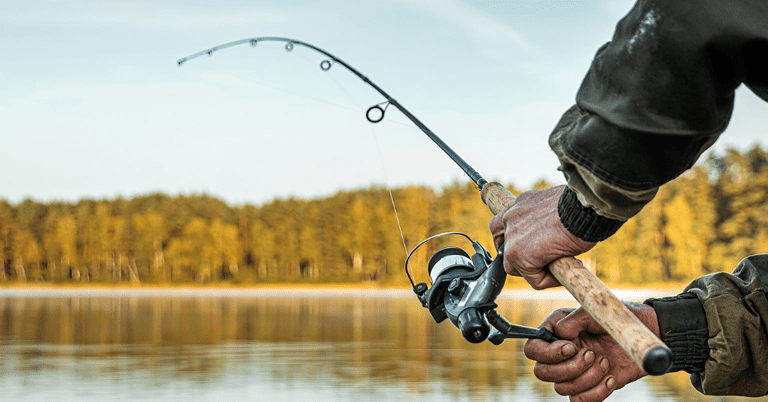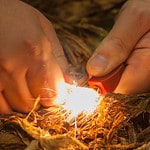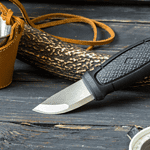Wels catfish (Silurus glanis) is one of the largest and most captivating freshwater fish species in Europe and Asia.
Their elongated bodies, smooth skin, and distinct whisker-like barbels make them easily recognizable to anglers seeking a challenging yet rewarding catch.
These large fish have been known to grow up to 16 feet long and weigh over 600 pounds - true freshwater giants that have captured scientists and fishermen for centuries.
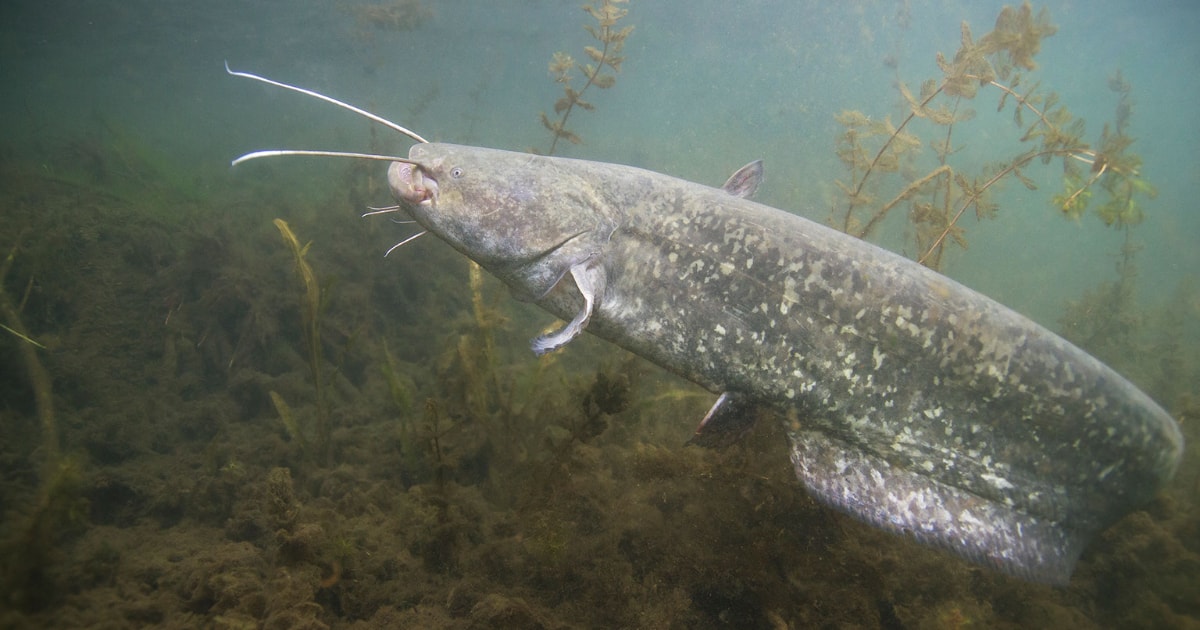
Importance of Understanding Wels Catfish Behavior and Habitat
Understanding Wels catfish behavior and habitat is essential for successful conservation efforts.
To effectively target and catch it, it's essential to comprehend their behavior and preferred habitats.
This insight will enable you to identify productive fishing spots, select appropriate equipment and techniques, and ultimately increase your chances of landing one of these magnificent creatures.
Wels catfish have an elusive nature and cunning hunting strategies, making them a challenging but rewarding quarry for anglers who take time to learn about their habits and preferences.
Purpose of the Guide
This guide aims to give a comprehensive overview of Wels catfish, emphasizing their behavior, habitat, and effective fishing techniques.
By studying these aspects closely, you'll become more aware of locating and catching these remarkable fish - making your time on the water enjoyable and successful.
Whether you're an experienced angler looking to deepen your knowledge or a novice looking to tackle Wels catfish for the first time, this guide offers invaluable insights and tips to help you reach your fishing objectives.
Biology and Behavior of Wels Catfish
Physical Characteristics
Size and weight: They are among the largest freshwater species, capable of reaching lengths up to 16 feet long with weights exceeding 600 pounds.
Most individuals caught by anglers measure between 3-5 feet long and weigh 30-60 pounds.
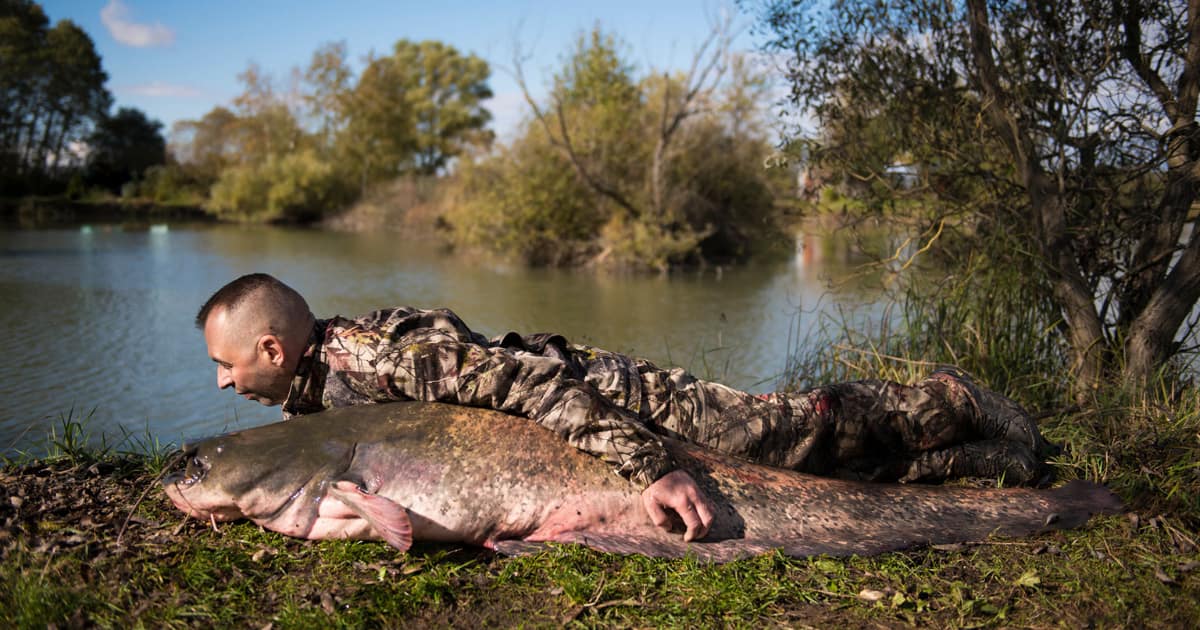
Coloration and markings: They exhibit a range of colorations depending on their age and environment.
Generally, their backs are dark grey, green, or brown, while their bellies are lighter in hue - usually white or cream.
Some individuals may have darker spots or mottled patterns on their flanks, which help them blend in with the environment.
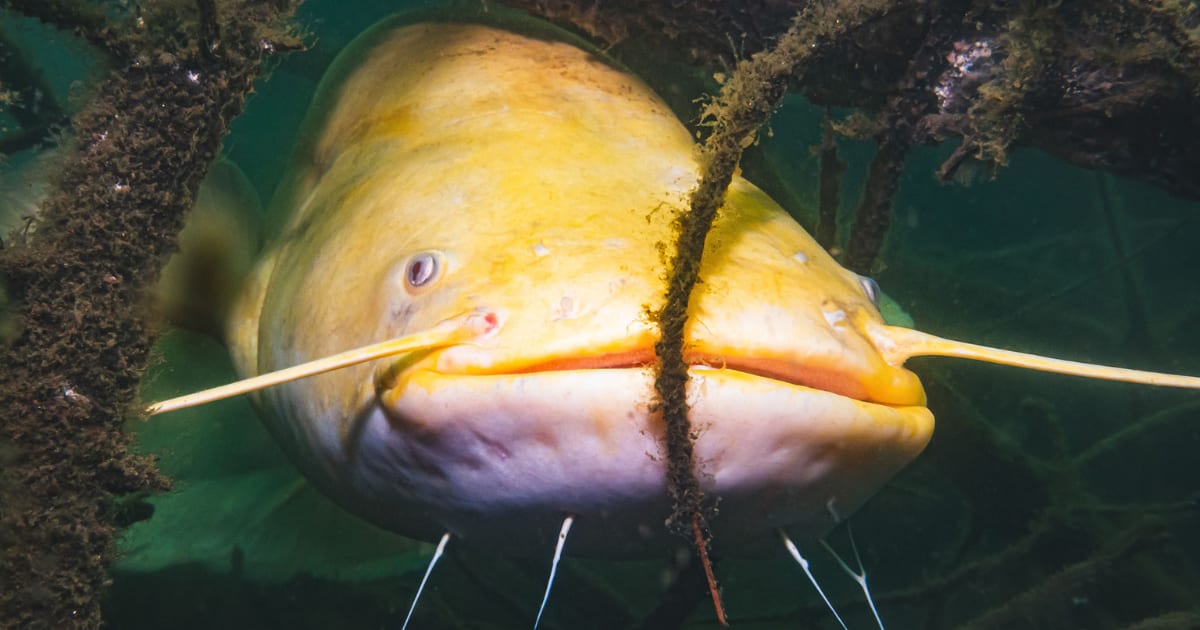
Anatomy: They have a distinctive, long, flat head with signature whisker-like barbels surrounding the mouth. These sensory organs help the fish locate prey in murky waters.
Furthermore, Wels catfish possess a sizeable caudal fin and a dorsal fin that runs along their back.
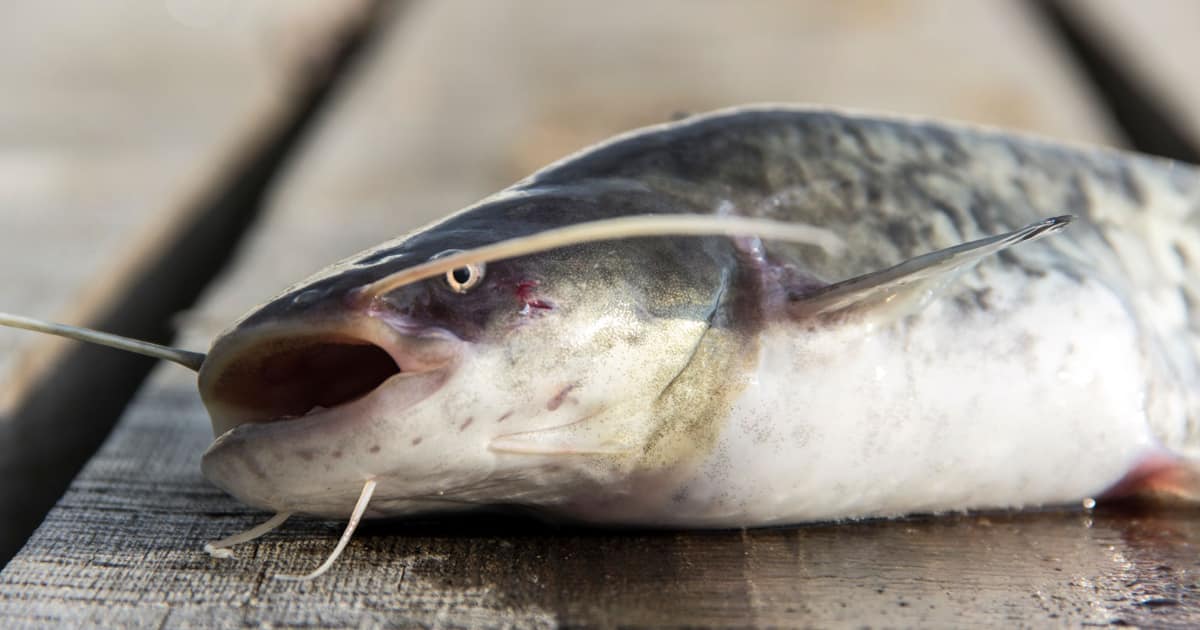
Life Cycle
Reproduction: Male wels catfish reach sexual maturity at four and five years for females.
Spawning typically occurs from late spring to early summer when water temperatures rise above 68degF (20degC).
Females lay their eggs in shallow protected areas like dense vegetation or submerged roots with plenty of cover such as foliage or roots, while the males guard the nest until the eggs hatch - usually within 7-10 days.
Growth and development: After hatching, Wels catfish fry feed on zooplankton before moving on to larger prey as they mature.
Juvenile catfish are more vulnerable to predation and rely on their coloration and hiding spots for protection.
Growth rates vary depending on factors like food availability and water temperature; however, typically, they experience rapid growth during their first few years of life.
Lifespan: They have an average lifespan of 20-30 years, some reaching even older. Their long lifespan and large size make them essential apex predators in their ecosystems.
Feeding Habits
Diet: Wels catfish are opportunistic predators that feed on fish, frogs, crayfish, and aquatic insects.
Larger individuals have been known to consume birds, rodents, and even small mammals - making them formidable predators in their environment.
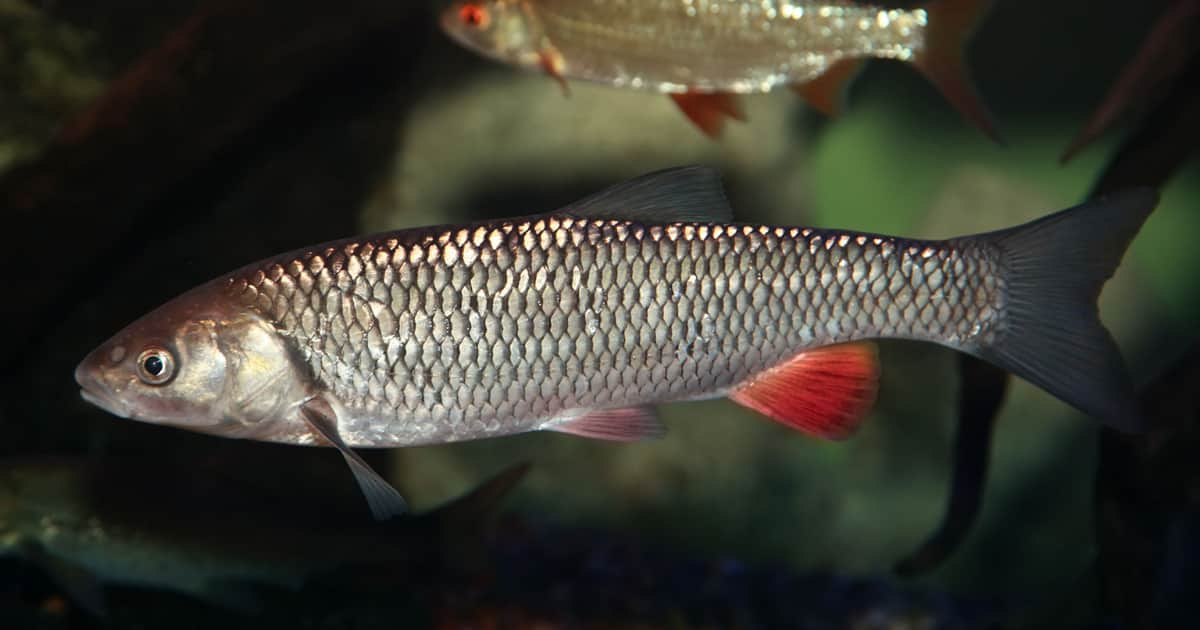
Hunting strategies: They are primarily ambush predators, using their excellent camouflage and patience to capture prey.
They use their barbels to locate prey in low visibility conditions, often waiting motionless for an unsuspecting meal to pass by before striking with lightning speed.
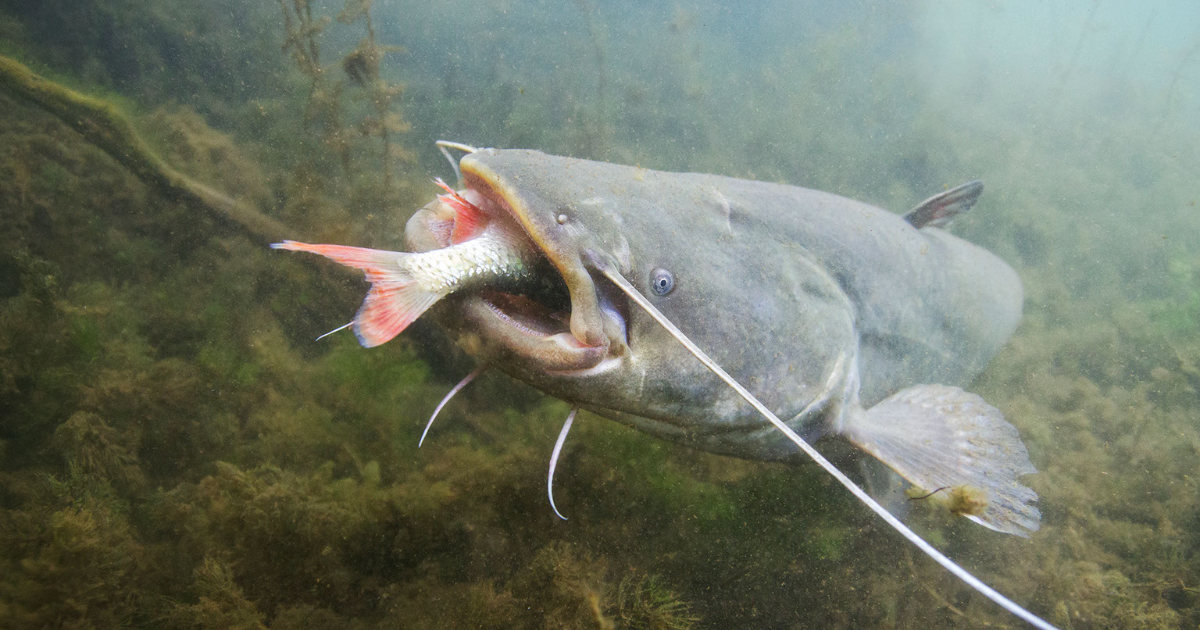
Feeding times: Although Wels catfish can feed at any time, they are most active during low light conditions such as early morning, late evening, and nighttime.
These periods coincide with increased activity among their preferred prey species, making it an ideal time for them to hunt.
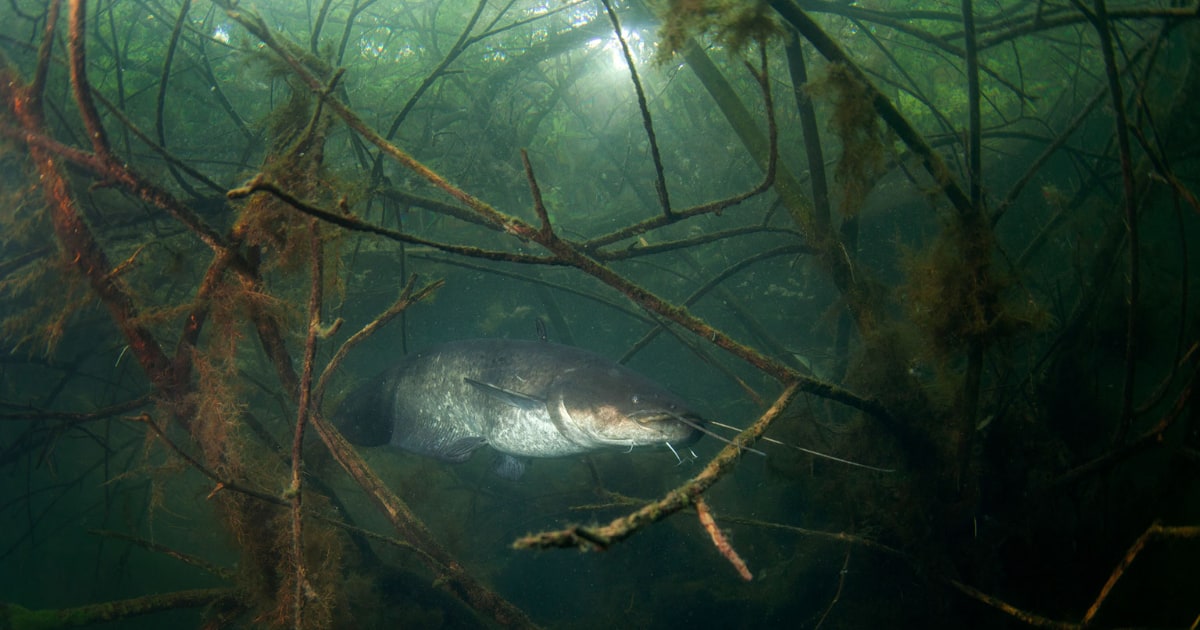
Habitat of Wels Catfish
Geographic Distribution: These catfish are native to various freshwater environments across Europe and Asia, from the British Isles and Scandinavia to the Caspian Sea.
As a result, they have become invasive in other regions like North America - where they are currently considered an invasive species.
Preferred Water Conditions
Let's consider some preferred water conditions:
Temperature: Wels catfish typically live in water temperatures between 20degC and 24degC, with optimal spawning conditions occurring when temperatures rise above 20degC.
While they can survive colder temperatures, their activity levels and feeding behavior may be reduced during these times.
Depth: These fish can be found at various depths, depending on water temperature, prey availability, and time of day.
Generally speaking, they prefer deeper waters during the day before moving into shallower waters to feed at night or when temperatures are warmer.
Water clarity: Wels catfish are highly adaptable creatures, capable of surviving in clear and murky waters.
However, their preference for low visibility conditions gives them an edge as ambush predators, using their barbels to locate prey hidden away in murky conditions.
Structure and Cover
Substrate Preferences: Wels catfish tend to group around areas with soft substrates, such as mud, silt, or sand, which provide ample hiding places and support a variety of prey species.
Utilization of Underwater Structures: Wels catfish often utilize underwater structures, such as rocks, fallen trees, or artificial features, for cover and hunting grounds.
Locating areas with large underwater structures can significantly increase your chances of finding these fish.
Vegetation and Cover: Dense aquatic vegetation, overhanging branches, and submerged roots provide essential cover for Wels catfish, protecting them from predators and ambush points.
Targeting areas with plenty of vegetation is an effective strategy for locating and catching these remarkable fish.
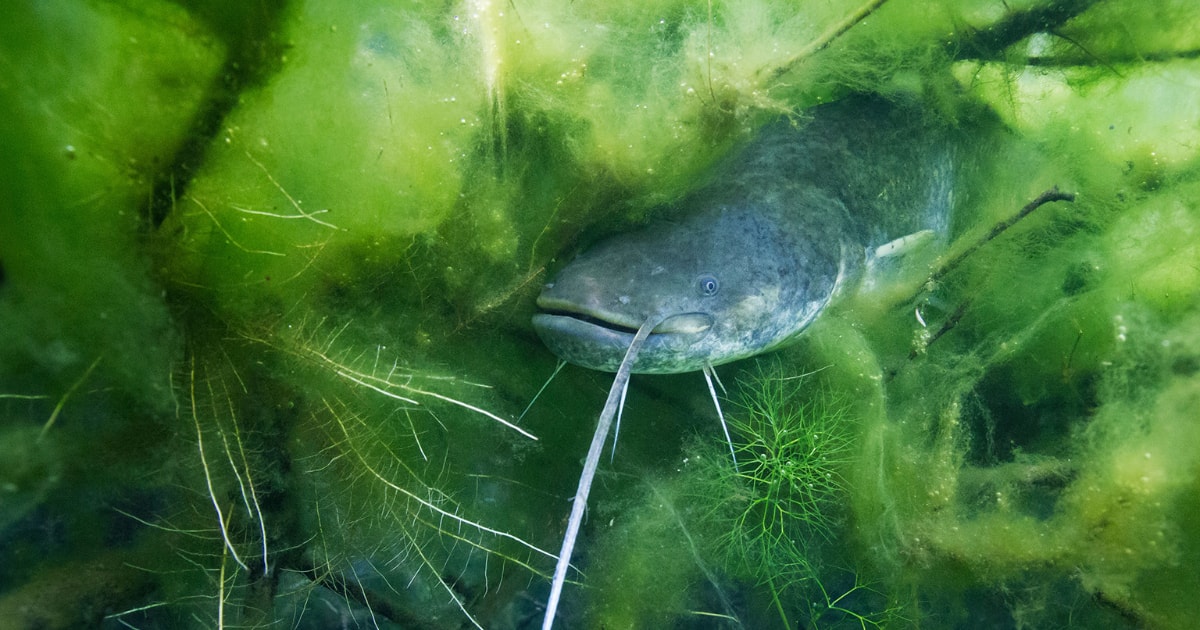
Wels Catfish Fishing Techniques
Best Times to Fish
Seasonal Patterns: Wels catfish are most active and easier to catch during spring and early summer when water temperatures rise.
They move into shallower waters for feeding or spawning, making them more accessible to anglers.
Late summer or fall can also be productive depending on water temperatures and available food sources; however, success depends on specific conditions.
Weather Conditions: Overcast or rainy days can be ideal for Wels catfish fishing, as these conditions often prompt the fish to move into shallow waters in search of food.
Furthermore, periods of stable weather may lead to increased feeding activity.
Time of Day: Early morning and late evening are typically the best times to target Wels catfish, as these predators tend to be more active during low-light conditions.
However, you can also catch them at night, particularly during warmer months.
Rods, Reels, and Line
When fishing for Wels catfish, the recommended gear is a medium to heavy action rod paired with a spinning or baitcasting reel with enough backbone to handle their potential size and strength while still providing sensitive detection of bites.
Line Strength and Type: Braided line with a 40-80 lb test strength is recommended, as it offers excellent strength, abrasion resistance, and sensitivity.
A fluorocarbon or monofilament leader of similar test strength can be used to protect against abrasion and stealthy presentation.
Bait and Lures
Live and Dead Bait Options: Wels catfish are opportunistic predators and will take live or dead bait such as small fish (roach, bream, or carp), frogs, or giant worms.
Live bait tends to be more effective due to its natural scent and movement.
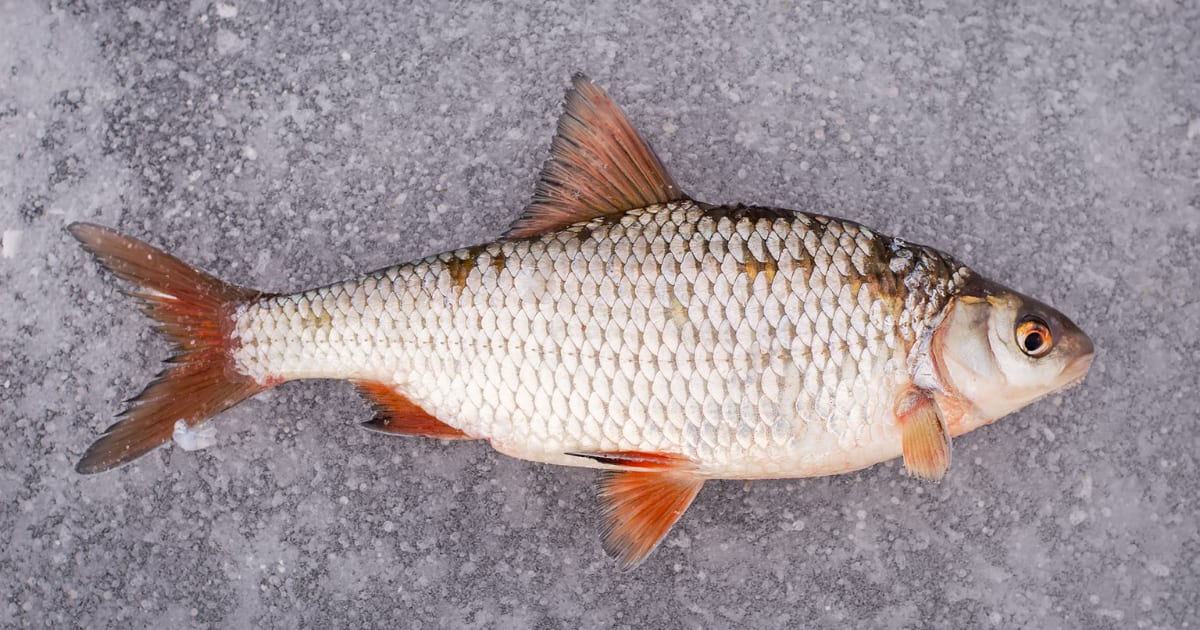
Soft Plastic Lures: Soft plastic lures such as shads, swimbaits, and curly-tail grubs can be effective for Wels catfish fishing.
Choose models that mimic the prey species found in your specific body of water.
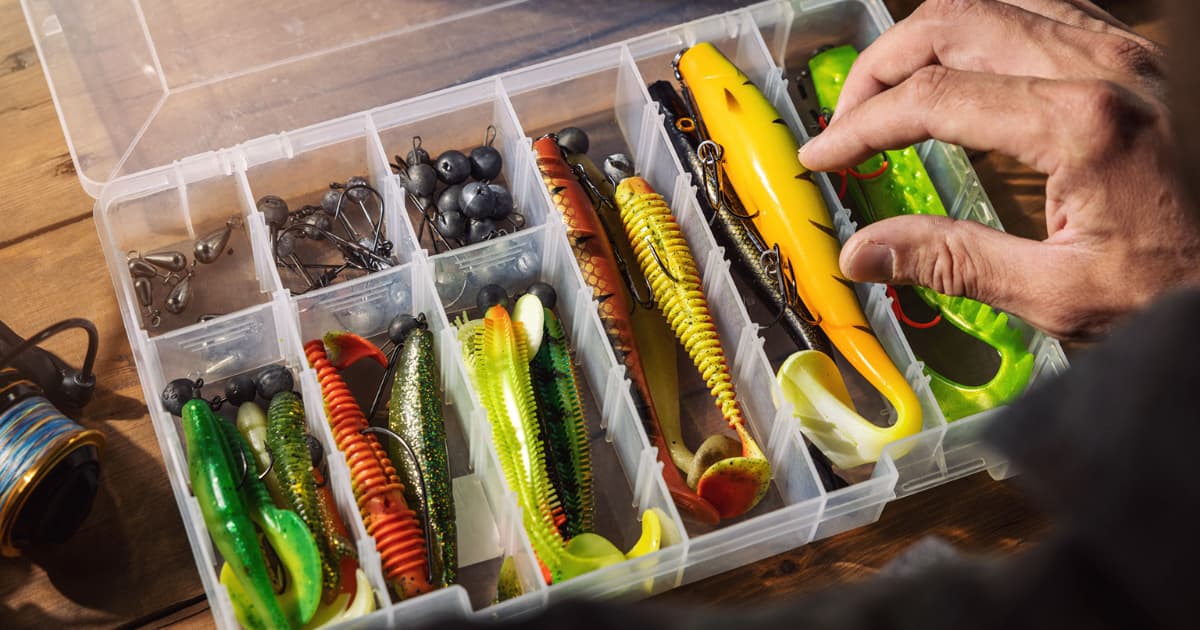
Hard body Lures: Crankbaits, swimbaits, and jerk baits can effectively target Wels catfish in open water or around the structure.
These lures resemble wounded or struggling prey which often leads to aggressive strikes.
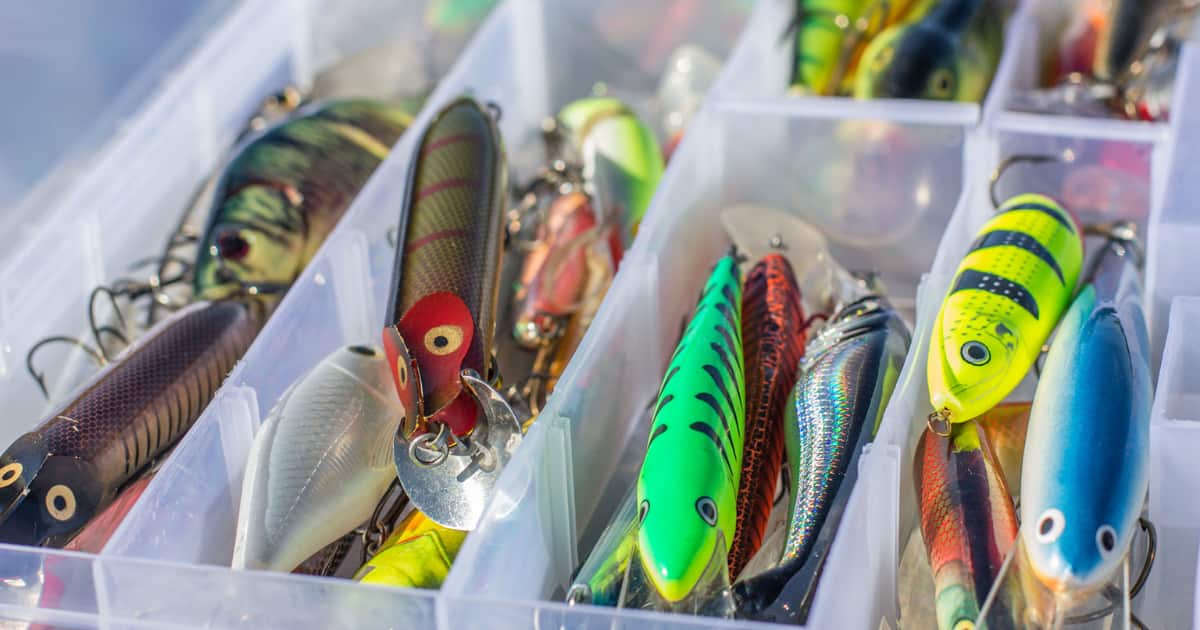
Spinnerbaits: Large spinnerbaits with flashy blades can be helpful in murky or low light conditions, as their spinning blade produces vibration and flash that attract Wels catfish.
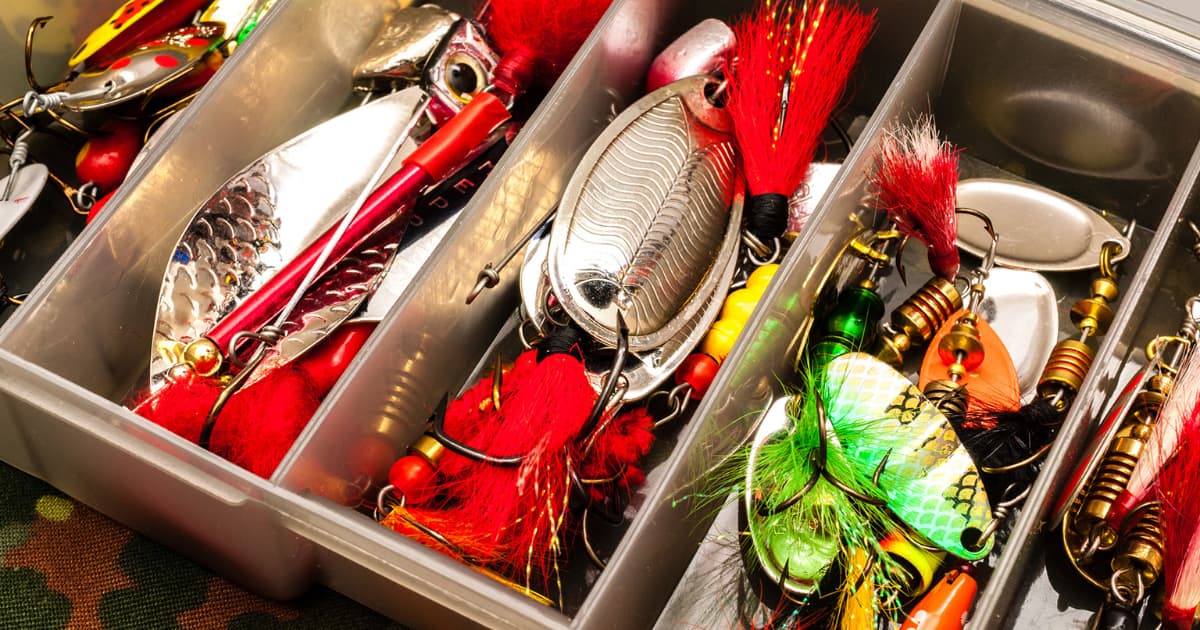
Topwater Lures: Frogs, mice, and poppers can be effective lures for Wels catfish as they imitate prey struggling on the water's surface and cause explosive strikes.
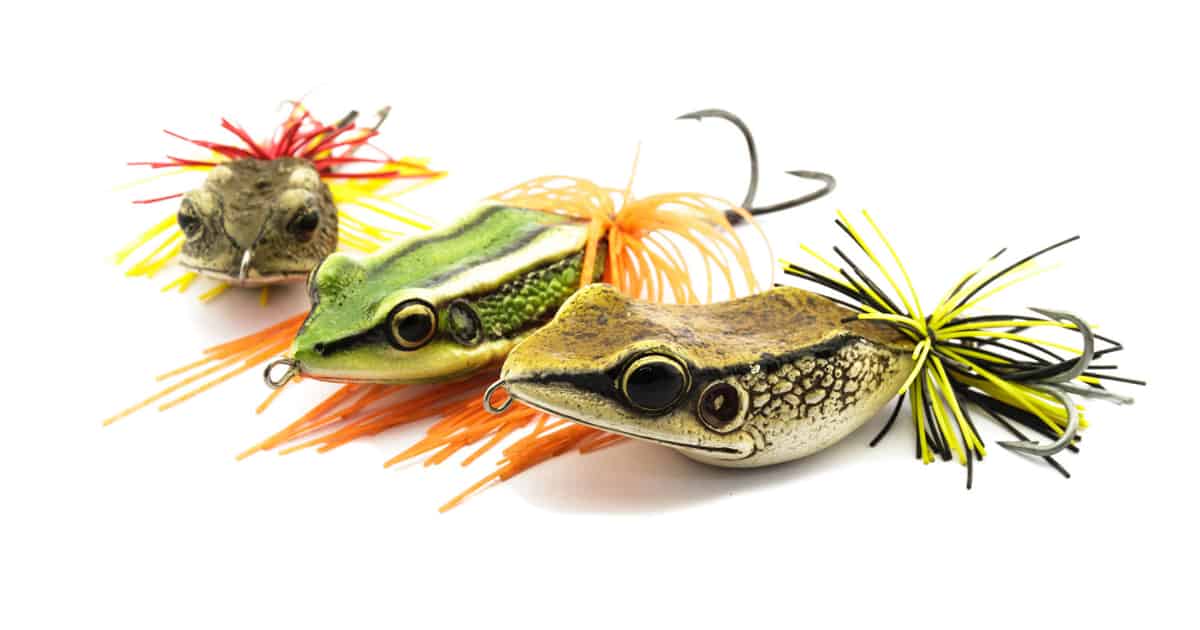
Effective Presentation Techniques
Casting and Retrieving: Cast your lure or bait near the structure or cover where Wels catfish may be hiding.
Vary your retrieval speed and add pauses to simulate a struggling prey item.
Vertical Jigging: Lower your lure or bait vertically into deeper water or near submerged structures, then slowly jig it up and down, simulating a wounded prey.
Drift Fishing: Take advantage of currents or winds to drift your bait or lure through areas where Wels catfish may be feeding.
This method allows you to cover more water and potentially locate more fish.
Float Fishing: Suspend your bait or lure beneath the surface.
By using a float and adjusting its depth according to where Wels catfish may be feeding, you can effectively target this technique for shallow water or near the surface during low light conditions when these fish are more active.
Conservation and Responsible Fishing Practices
Catch and Release Guidelines
As top predators, Wels catfish are essential in maintaining balance within their ecosystems.
By practicing catch-and-release fishing practices, you help preserve these populations so future generations can enjoy this unique angling experience.
To minimize stress or injury to the fish, follow these guidelines:
- Use the appropriate tackle to land the fish quickly and reduce exhaustion.
- Keep the fish submerged during the release process.
- Handle gently with wet hands to preserve their protective slime layer.
- Remove hooks carefully with needle-nose pliers or a hook remover, and consider using barbless hooks for easier removal.
- Allow the fish to recover in the water before releasing it, supporting it upright until it swims away.
Local Fishing Regulations:
To safeguard Wels catfish populations and their habitats, it's essential to abide by local fishing regulations.
These may include:
- Fishing seasons and closed periods should be considered to protect spawning fish populations, with size/weight limits to ensure sustainable harvest levels, gear restrictions to minimize the impact on fish populations and the environment, licensing requirements supporting management strategies and conservation initiatives, etc.
- Before embarking on your fishing expedition, familiarize yourself with the regulations applicable to the area you plan to visit and secure any necessary permits or licenses.
Invasive Species Considerations:
Where Wels catfish have been introduced, they can become invasive and negatively impact native species and ecosystems.
As an ethical angler, it's crucial to take into account the following:
- First, be mindful of the potential hazards and consequences that could occur from the introduction of non-native species.
- Never release live Wels catfish into a body of water where they are not native; doing so could have unintended ecological repercussions.
- Maintain your watercraft, including boats, trailers, and fishing equipment, to prevent the spread of invasive species or pathogens to other water bodies.
- By employing responsible fishing techniques and adhering to conservation guidelines, anglers can help guarantee the long-term viability of Wels catfish populations and the health of the aquatic ecosystems in which they reside.
Conclusion
Recap of Key Points:
Wels catfish are among the largest freshwater fish, possessing unique physical characteristics and impressive hunting strategies.
Understanding their biology, behavior, and preferred habitat is essential for locating and catching these predators.
Knowledge of effective fishing techniques, such as gear selection, bait and lure selection, and presentation methods, can significantly boost your odds of success.
Implementing responsible fishing and adhering to conservation guidelines helps guarantee the viability of Wels catfish populations and the ecosystems they occupy.
Motivating You to Apply Knowledge for Successful Wels Catfish Fishing:
With the knowledge gained from this guide, you are now better prepared to start your Wels catfish fishing adventure.
Whether you are an experienced angler looking for a new challenge or a novice exploring Wels catfish angling for the first time, applying the insights and techniques discussed here can lead to successful and enjoyable fishing experiences.
As you take to the water, remember to respect the environment and local regulations by adhering to rules.
By working together as one cohesive unit, we can contribute to maintaining Wels catfish populations and their home waters. Happy fishing!

